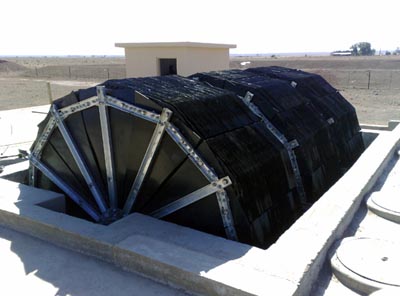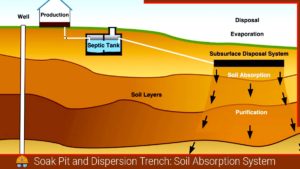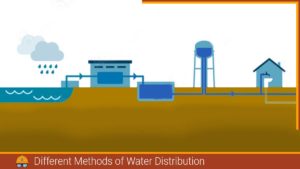Treatment of sewage is a critical process that helps protect the environment and public health by removing harmful contaminants from domestic and industrial sewage so that the final effluent is safe enough for disposal to land or into water bodies. In this article, we will discuss the different stages involved in the treatment of sewage.
Different stages involved in the treatment of Sewage:
The treatment of sewage typically involves multiple stages, each designed to target specific contaminants and ensure that the treated water is safe for the environment and human use.
Preliminary Treatment of Sewage:
The first stage in sewage treatment is the preliminary treatment, which involves the removal of large debris either heavy inorganic solids or floating materials from the wastewater. This debris may include dead animals, trees, branches, papers, pieces of rags, wood, plastic and bottles, etc. According to Garg in 2010 states that “about 15 to 30% of the BOD (Bio-Chemical Oxygen demand) is reduced in this treatment process”.
This is typically done through the use of screens, grit chambers, and sedimentation tanks. Screens are used to trap large objects such as plastics, rags, and sticks, preventing them from entering the treatment process and causing damage to equipment. Grit chambers and sedimentation tanks are used to allow heavy particles such as sand and gravel to settle down, reducing the potential for abrasion and wear on downstream equipment. Skimming tanks for removing oils and greases.
Primary Treatment of Sewage:
The next stage in sewage treatment is the primary treatment, which aims to remove suspended solids and organic matter from the wastewater. This is typically accomplished through the use of sedimentation tanks, also known as primary clarifiers or settling tanks. The liquid effluent from primary treatment often contains a large amount of suspended organic material and BOD as high as about 60% of the original (Grag, 2010).
In these tanks, the wastewater is allowed to settle, and solids, known as sludge, settle to the bottom, while scum, which is lighter, floats to the top. The settled sludge is then removed and sent for further treatment, while the scum is skimmed off and also treated.
Secondary Treatment of Sewage:
After primary treatment, the wastewater undergoes secondary treatment, which is designed to remove dissolved and colloidal organic matter that remains in the wastewater. This is typically accomplished through the use of biological decomposition processes that involve the use of microorganisms to break down organic matter. The biological process is carried out either by aerobic or anaerobic conditions.
There are several methods of secondary treatment, including the activated sludge process, trickling filter process, and rotating biological contactors (RBCs).
Activated Sludge Process:
Activated sludge process is an aerobic process also known as aerobic suspended culture. The activated sludge process is one of the most common methods of secondary treatment. In this process, microorganisms, such as bacteria and protozoa, are used to aerobically break down the organic matter in the wastewater. The wastewater is mixed with a large population of microorganisms in a tank, known as an aeration tank, and oxygen is supplied to promote the growth of the microorganisms. The microorganisms consume the organic matter, converting it into carbon dioxide, water, and more microorganisms. The mixture is then sent to a secondary clarifier, where the microorganisms settle to the bottom as sludge, which is then returned to the aeration tank to continue the treatment process.
Trickling Filter Process:
The trickling filter process is one of the most commonly used technologies in modern days. The process involves the use of a fixed media, such as rocks or plastic materials, on which microorganisms attach and form a biofilm. The wastewater is trickled over the media, allowing the microorganisms to degrade the organic matter as the wastewater passes through the biofilm. The treated wastewater is then collected at the bottom of the trickling filter and sent for further treatment.


Rotating Biological Contactors (RBCs):
Rotating biological contactors (RBCs) is a aerobic process known as aerobic attached culture. They are circular discs that are partially submerged in wastewater. The discs are coated with microorganisms, which are attached to the discs and form a biofilm. As the discs rotate, the microorganisms come in contact with the wastewater, where they degrade the organic matter. The treated wastewater is then collected at the bottom of the tank and sent for further treatment.
Aerobic Stabilisation Units:
Stabilization ponds are earthen basins designed and constructed for the treatment of sewage and biodegradable industrial wastewater. These ponds allow for open-flow through, providing extended detention periods ranging from a few days to several days, allowing for natural processes to establish and purify the waste. Depending on the mechanism of purification, stabilization ponds can be classified as aerobic, facultative, or anaerobic.
Tertiary Treatment of Sewage:
Tertiary treatment, also known as advanced or final treatment, is the last stage in sewage treatment and is used to further polish the treated wastewater to a higher quality before it is discharged or reused. Tertiary treatment is not always required in all sewage treatment plants, but it is often employed when the treated wastewater needs to meet stringent water quality standards or when it is intended for reuse in certain applications such as irrigation or industrial processes.
Tertiary treatment methods can vary depending on the specific requirements and regulations of a particular location, but some common methods include:
a. Filtration: Filtration involves passing the treated wastewater through different types of filters, such as sand filters, multimedia filters, or membrane filters, to further remove fine particles, remaining suspended solids, and microorganisms from the water. This helps to improve the clarity and quality of the treated wastewater.
b. Disinfection: Disinfection is the process of killing or inactivating disease-causing microorganisms in the treated wastewater. Common disinfection methods include chlorination, ultraviolet (UV) disinfection, and ozonation. These methods are effective in destroying or deactivating bacteria, viruses, and other harmful microorganisms to ensure that the treated wastewater is safe for the environment or reuse.
c. Nutrient Removal: Nutrient removal is an additional step that may be required in some sewage treatment plants to reduce the levels of nutrients, such as nitrogen and phosphorus, in the treated wastewater. Excessive levels of nutrients in discharged wastewater can cause water pollution and lead to eutrophication, which can harm aquatic ecosystems. Nutrient removal can be achieved through biological processes, such as denitrification and phosphorus removal, or through chemical processes, such as adding chemicals that precipitate the nutrients for removal.
Sludge Treatment:
Throughout the sewage treatment process, sludge, which is the solid material that is removed from the wastewater, is generated. Sludge contains a high concentration of organic matter and other contaminants, and it requires proper treatment before it can be safely disposed of or reused. Sludge treatment methods include:
a. Thickening: Thickening involves removing water from the sludge to reduce its volume and make it easier to handle and transport. This can be done through gravity settling or by using mechanical devices, such as centrifuges or belt presses, to separate the water from the sludge.
b. Stabilization: Stabilization is the process of reducing the biological activity of sludge to prevent odor, putrefaction, and the release of harmful pathogens. Common stabilization methods include aerobic digestion, anaerobic digestion, and composting, which can reduce the volume of sludge and convert it into a more stable and safe form for disposal or reuse.
c. Dewatering: Dewatering is the process of further removing water from the sludge to achieve a higher solid content, making it easier and more cost-effective to transport and dispose of. Mechanical dewatering methods, such as centrifuges, filter presses, and drying beds, are commonly used to achieve higher solid content in the sludge.
d. Disposal or Reuse: Once the sludge has been treated and stabilized, it can be disposed of in accordance with local regulations, such as landfilling or incineration, or it can be reused for various purposes. For example, treated sludge, also known as biosolids, can be used as a fertilizer in agriculture, as a source of renewable energy through anaerobic digestion, or as a construction material in land reclamation projects.
References:
- Grag S.K. (November, 2010). Environmental Engineering (Vol.-II). Sewage Disposal and Air Pollution Engineering. (23rd ed.). Khanna Publishers. Daryaganj, New Delhi-110002.
- Nataraajan K.V (1997). Basic Civil Engineering.
Also, read:
- What is Septic Tank? | Components | Uses
- How to Design a Septic Tank? | Septic Tank Design
- What is the difference between S-trap and P-Trap?
![]()







